铜镍冶炼渣主要是铜镍矿在冶炼过程中排放的火法熔炼渣[6],以Fe和Si元素为主,其含量分别为40%和30%,常见的处置方式为提取有价金属和堆存,综合利用率较低[7-8]。因此,利用冶炼渣制备充填胶凝材料成为新的研究热点,特别是具备一定火山灰活性的冶炼渣。现有研究表明,铜镍冶炼渣具有一定的胶凝活性,具备将其制备为胶凝材料及建材制品的可行性[9-11]。Singha等[12]采用铜渣、NaOH和Na4SiO4分别作为原材料及激发剂,研究铜渣作为硅铝酸盐材料制备碱激发胶凝材料的可行性,发现铜渣具有制备碱激发胶凝材料的巨大潜力。Nazer等[13]研究了铜渣在石灰和水泥体系中的火山灰活性,发现铜渣取代水泥25%制备的砂浆和碱激发铜渣在养护温度为65 ℃的条件下性能最优,进一步证明铜渣作为原材料制备建筑材料具有一定的可行性。朱街禄等[14]对铜渣—水泥复合胶凝体系的水化热及水化动力学进行了研究,通过采用不同细度、不同掺量的铜渣取代水泥测量其水化放热速率和放热量,发现铜渣的掺入在不同程度上推迟了复合胶凝体系的诱导期结束时间、加速期开始时间和第二放热峰出现时间,同时发现,在水化12 h内,铜渣对胶凝体系的水化呈抑制作用,而在水化12 h后,铜渣的活性被逐渐激发,水化速率加快。
本文以某铜镍矿冶炼厂产出的铜镍冶炼渣为原材料,通过测定不同粉磨细度、不同冶炼渣掺量和不同激发剂掺量下充填体的抗压强度,同时采用扫描电镜(SEM)对其水化产物进行分析,探索采用铜镍冶炼渣制备胶凝材料在充填领域应用的可行性。
1 试验内容
1.1 试验原材料与配比
表1 原材料化学组成
Table 1
| 材料名称 | CaO | SiO2 | Al2O3 | MgO | TFe | MnO | P2O5 | K2O | Na2O | SO3 | C | TiO2 |
|---|---|---|---|---|---|---|---|---|---|---|---|---|
| 铜镍冶炼渣 | 2.20 | 34.60 | 3.20 | 5.30 | 50.20 | - | 0.08 | 0.30 | 0.60 | 0.60 | 0.03 | - |
| 水泥 | 62.56 | 20.77 | 4.40 | 2.90 | 3.15 | - | - | 0.58 | 0.60 | 2.80 | - | - |
图1
图2
图3
图3
不同粉磨时间冶炼渣粒径分布
Fig. 3
Particle size distribution of smelting slag at different grinding times
由表1可知,铜镍冶炼渣中碱性氧化物与酸性氧化物的比值,即碱度系数M0、活性系数Ma和质量系数K分别为
由上述公式计算可知,本研究中的铜镍冶炼渣质量系数远小于1.20,根据GB/T 18046-2008《用于水泥和混凝土中的粒化高炉矿渣粉》[16],本研究中铜镍冶炼渣属于酸性矿渣,且活性较低。
通过以上激光粒度分析结果可知,随着粉磨时间的延长,冶炼渣粒度逐渐变小,粒径分布有显著变化。对3组试样粒径分布结果进行分析,观察D(0.1)(颗粒累计分布为10%所对应的粒径)、D(0.5)(颗粒累计分布为50%所对应的粒径)、D(0.9)(颗粒累计分布为90%所对应的粒径)随时间的变化,在粉磨时间为40~60 min内,随着粉磨时间的延长,冶炼渣粒径D(0.1)、D(0.5)、D(0.9)随之减小,具体数值见表2。
表2 冶炼渣粒径分布随粉磨时间的变化
Table 2
| 粉磨时间/min | D(0.1) | D(0.5) | D(0.9) |
|---|---|---|---|
| 40 | 7 | 48 | 164 |
| 50 | 4 | 29 | 120 |
| 60 | 3.4 | 23 | 90 |
水泥:本试验水泥采用普通P.O 42.5硅酸盐水泥,其化学组成见表1。
戈壁集料:试验采用的戈壁集料取自喀拉通克铜镍矿充填站戈壁集料堆场,其物理力学参数如下:堆积密度为1.6 t/m3,含水率为3.9%,孔隙率为38.46%。粒径分布见图4。
图4
拌合水:试验采用自来水作为拌合水,进行试件的制备。
激发剂:试验采用碱性激发剂作为粉末状硅酸钠,其模数为1。
表3 试验方案的因素水平表
Table 3
| 因素水平 | A粉磨时间/min | B冶炼渣/% | C激发剂/% |
|---|---|---|---|
| 1 | 40 | 20 | 2 |
| 2 | 50 | 30 | 4 |
| 3 | 60 | 40 | 6 |
表4 正交试验配比方案明细表
Table 4
| 编号 | A粉磨时间 | B冶炼渣 | C激发剂 | A粉磨时间/ min | B冶炼渣/% | C激发剂/% |
|---|---|---|---|---|---|---|
| 1# | 1 | 1 | 1 | 40 | 20 | 2 |
| 2# | 1 | 2 | 2 | 40 | 30 | 4 |
| 3# | 1 | 3 | 3 | 40 | 40 | 6 |
| 4# | 1 | 1 | 2 | 50 | 20 | 4 |
| 5# | 1 | 2 | 3 | 50 | 30 | 6 |
| 6# | 1 | 3 | 1 | 50 | 40 | 2 |
| 7# | 1 | 1 | 3 | 60 | 20 | 6 |
| 8# | 1 | 2 | 1 | 60 | 30 | 2 |
| 9# | 1 | 3 | 2 | 60 | 40 | 4 |
1.2 试验方法
(1)试件的制备及养护。按照表4的配比进行配料,准确称取冶炼渣、水泥和戈壁集料,加入激发剂粉末状硅酸钠后混匀,加水搅拌均匀后浇筑进尺寸为100 mm×100 mm×100 mm的塑料试模中,浇筑完毕后使用不锈钢尺进行刮平,放入养护室中养护24 h后取出,拆模取出试样,放入温度为20 ℃、湿度为90%的养护室进行养护至规定龄期。
(2)单轴抗压强度试验。采用压力机进行单轴抗压强度试验,压力机加载速率设定为0.5 kN/s,测试龄期为7 d和28 d。
(3)SEM测试。采用MLA(Mineral Liberation Analyser)矿物自动分析仪对水化产物形貌进行分析。
2 结果与分析
2.1 直观分析
按照试验配比制备充填体试块,标准养护条件下养护7 d和28 d,进行单轴抗压强度测试,如图5所示。
图5
图5
不同养护龄期充填体试块抗压强度
Fig. 5
Compressive strength of filling test block at different ages
从图5中可以看出:不同组别之间7 d和28 d抗压强度数据差别较大,但均低于对照组。同时对比分析1#、2#和3#组抗压强度数据发现,当冶炼渣粉磨40 min时,随着冶炼渣掺量的提高,充填体抗压强度呈明显下降趋势,当冶炼渣掺量由20%提高至40%时,7 d和28 d抗压强度分别下降54.31%和45.33%。再一次验证了上述XRD图谱分析结果,冶炼渣本身玻璃体含量较低导致其胶凝活性相对较低。
分析5#和6#组数据发现,当冶炼渣粉磨50 min时,掺量从30%提高至40%,充填体试块28 d抗压强度提高了20.46%。同样地,对比7#和8#组数据,当冶炼渣粉磨时间为60 min时,掺量由20%提高至30%,充填体试块28 d抗压强度提高了7.03%。对比1#和4#组数据发现,相同冶炼渣和激发剂掺量下,随着粉磨时间由40 min提高至50 min,充填体试块28 d抗压强度提高了4.25%。对比分析1#和4#,5#和6#,7#和8#组数据发现,随着冶炼渣粉磨时间和掺量的提高,充填体试块7 d抗压强度分别有一定程度的降低或略有提高,然而养护28 d后抗压强度分别提高4.25%、20.46%和7.03%,说明铜镍冶炼渣发生了一定的火山灰反应,且主要在养护后期发生。
采用扫描电镜对水化产物进行直观分析,图6表示养护28 d后各组戈壁集料胶结试件SEM结果,通过观察不同放大倍数的照片可以发现各组试样的微观形貌及典型水化产物的特征。
图6
2.2 因素水平权重验证分析
通过上述正交试验直观分析可以看出,方案4中养护7 d和28 d的试件单轴抗压强度分别为1.80 MPa和3.68 MPa,相比较其他方案,该方案养护至一定龄时单轴抗压强度为最优。因此,方案4所对应的因素水平组合A1B1C2最优。进一步利用正交表的综合可比性来分析验证正交试验中得出的最优结果,如表5所示。
表5 权重分析计算表
Table 5
| 编号 | A | B | C | 试验结果y |
|---|---|---|---|---|
| 1# | 1 | 1 | 1 | 3.53 |
| 2# | 1 | 2 | 2 | 2.17 |
| 3# | 1 | 3 | 3 | 1.93 |
| 4# | 1 | 1 | 2 | 3.68 |
| 5# | 1 | 2 | 3 | 2.59 |
| 6# | 1 | 3 | 1 | 3.12 |
| 7# | 1 | 1 | 3 | 3.27 |
| 8# | 1 | 2 | 1 | 3.50 |
| 9# | 1 | 3 | 2 | 2.30 |
| K1 | 7.63 | 10.48 | 10.15 | |
| K2 | 9.39 | 8.26 | 8.15 | |
| K3 | 9.07 | 7.35 | 7.79 | |
| ¯k1 | 2.54 | 3.49 | 3.38 | |
| ¯k2 | 3.13 | 2.75 | 2.72 | |
| ¯k3 | 3.02 | 2.45 | 2.60 | |
| 极差R | 0.59 | 1.04 | 0.78 |
Ki(i=1,2,3,4)表示某个因素第i个水平所有抗压强度之和,i为影响因素的水平数,即¯ki=Ki/4;R为某因素的最大值与最小值之差,R值越大,表明该因素对强度的影响作用越明显。由表6可以看出:RB>RC>RA。
与之对应地,因子B(冶炼渣掺量)为主要影响因素,因子C(激发剂掺量)次之,而因子A(激发剂掺量)影响最小。通过极差分析可知:铜镍冶炼渣掺量对试件单轴抗压强度的影响最大,极差为1.04,这与铜镍冶炼渣本身胶凝活性较低有关。当其作为矿物掺合料取代水泥时稀释了水泥[21],导致水泥用量的减少以及体系水化产物数量的减少。同时,由于铜镍冶炼渣本身火山灰活性较低[22],导致后期试件的单轴抗压强度增长并不明显。激发剂掺量对试件单轴抗压强度的影响次之,极差为0.78。粉磨时间对试件单轴抗压强度的影响最小,极差为0.59。随着粉磨时间的增加,颗粒粒径逐渐减小,粉磨作用导致铜镍冶炼渣本身产生晶格缺陷[23-25],一定程度上可以提高其活性。但受制于铜镍冶炼渣本身玻璃体含量较低的影响,粉磨时间对试件单轴抗压强度的影响作用较小。
2.3 水平均值图
进一步分析不同水平对试件抗压强度的影响。将每个因子不同水平的均值绘制在同一幅图中进行分析(图7),可以看出每一因子所对应的最好水平分别为A2、B1和C1。
图7
从图7可以看出:(1)试件的强度随着粉磨时间的延长呈现出先上升后降低的趋势,说明对于以戈壁集料为骨料制备的试件而言,并非冶炼渣粉磨时间越长,对强度的贡献作用越好,这种现象可能是由于冶炼渣自身的活性有限,因此在充填料浆中具有作为胶凝材料和骨料的双重作用[26]。一般而言,采用冶炼渣作为胶凝材料,冶炼渣粉磨时间越长,粒径越小,对强度的贡献作用越强;而作为骨料时,其对强度的贡献作用与骨料本身级配的优劣[27]有明显的关系,良好的级配是保证强度的关键,并非越细越好。(2)试件的强度随着冶炼渣掺量的增加呈显著下降的趋势,进一步说明冶炼渣本身的胶凝活性较低,其掺量越高体系中水化产物生成量越少,抗压强度降低。(3)试件的强度随着激发剂掺量的增加也呈下降趋势,但下降幅度相对冶炼渣掺量较低,这说明该激发剂对冶炼渣胶凝活性的激发效果并不明显。
3 结论
(1)铜镍冶炼渣活性较低,且属于酸性渣,其质量系数和活性系数分别为0.31和0.06,碱度系数为0.2。
(2)采用水泥掺铜镍冶炼渣作胶凝材料胶结戈壁集料时,铜镍冶炼渣最佳粉磨时间为50 min,对应的D(0.1)、D(0.5)和D(0.9)分别为4 μm、29 μm和120 μm。
(3)铜镍冶炼渣在水泥戈壁集料体系中能够发生火山灰反应,对充填体后期强度有一定的提升作用。通过SEM图谱进一步发现,由于铜镍冶炼渣的掺入,在后期促进体系钙矾石和水化硅酸钙(C-S-H)的生成。
(4)通过正交试验研究,确定铜镍冶炼渣—水泥比例为2∶8,激发剂掺量为4%,充填体单轴抗压强度最高。极差分析进一步表明,采用该激发剂激发效果并不明显。
http://www.goldsci.ac.cn/article/2020/1005-2518/1005-2518-2020-28-5-669.shtml
参考文献
铜冶炼渣矿物学研究与资源化实践应用
[J].
Mineralogical research and practical application of copper smelting slag
[J].
火法富集—湿法分离工艺从固废资源中回收锌及其他有价金属的探究
[J].
Study on recovery of zinc and other valuable metals from solid waste resources by fire enrichment wet separation process
[J].
冶金行业含铁固体废弃物资源化综合利用研究
[J].
Research on comprehensive utilization of iron-containing solid waste in metallurgical industry
[J].
冶金渣资源化利用的现状和发展趋势
[J].
Status and development trend of metallurgical slag resource utilization
[J].
铜镍转炉渣的物质组成与综合利用初探
[J].
Preliminary study on the composition and comprehensive utilization of copper-nickel converter slag
[J].
Slags with a high Al and Fe content as precursors for inorganic polymers
[J].
Performance of copper slag contained mortars after exposure to elevated temperatures
[J].
The properties of concrete based on steel slag as a by-product of metallurgical production
[J].
Immobilisation of high-arsenic-containing tailings by using metallurgical slag-cementing materials
[J].
Production and properties of ferrite-rich CSAB cement from metallurgical industry residues
[J].
Evaluating the alkali-silica reaction in alkali-activated copper slag mortars
[J].
Use of ancient copper slags in Portland cement and alkali activated cement matrices
[J].
铜渣粉—水泥复合胶凝体系的水化热及动力学研究
[J].
Research on hydration heat and kinetics of copper slag powder-cement composite gelling system
[J].
铜渣的粉磨特性及对水泥净浆强度的影响
[J].
Grinding characteristics of copper slag and its effect on cement paste strength
[J].
火山灰活性评价方法及其影响因素
[J].
Volcanic ash activity evaluation method and its influencing factors
[J].
偏高岭土火山灰活性的研究与利用
[J].
Research and utilization of metakaolin volcanic ash activity
[J].
Alkali silica reactivity of rice husk ash in cement paste
[J].
铅锌冶炼渣充填胶凝材料研究及应用
[J].
Research and application of lead-zinc smelting slag filling cementing materials
[J].
铅锌尾矿和冶炼渣双掺制备复合水泥的试验研究
[J].
Experimental study on the preparation of composite cement by mixing lead-zinc tailings and smelting slag
[J].
Nitrate and nitrite reduction activity of activated sludge microcosm in a highly alkaline environment with solid cementitious material
[J].
某低活性酸性矿渣微粉的机械力化学效应研究
[J].
Study on the mechanochemical effect of a low activity acid slag powder
[J].
热活化和机械活化对拜耳法赤泥性能影响
[J].
Effect of thermal activation and mechanical activation on properties of Bayer red mud
[J].
Development of alkali-activated cementitious material using copper slag
[J].
Effect of sulphate exposure on mortar consisting of ferronickel slag aggregate and supplementary cementitious materials
[J].
Assessment of drainage and filtration of sub-ballast course considering effect of aggregate gradation and subgrade condition
[J].




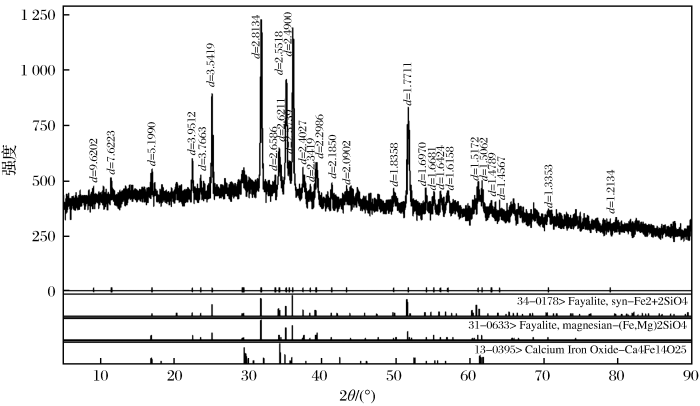
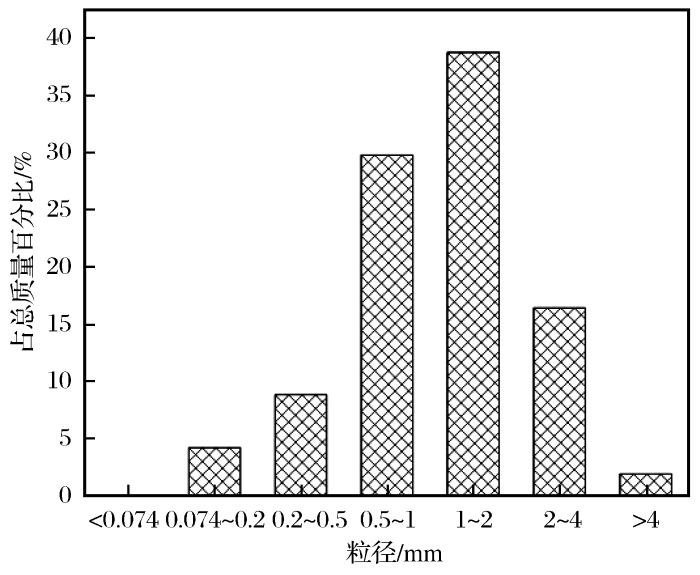
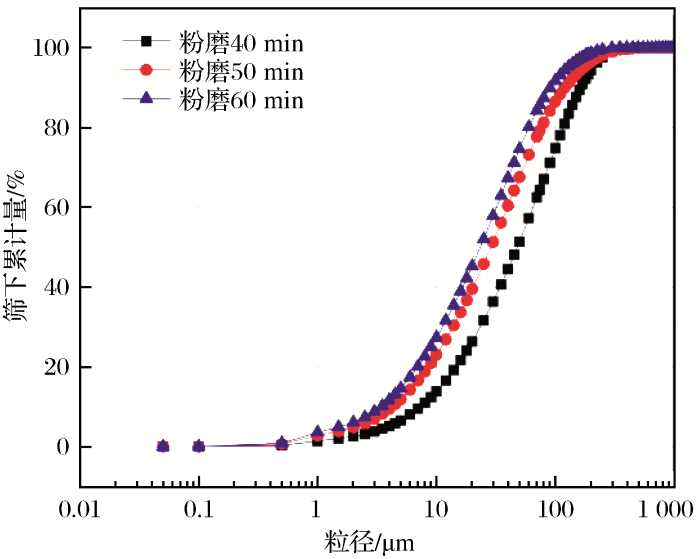
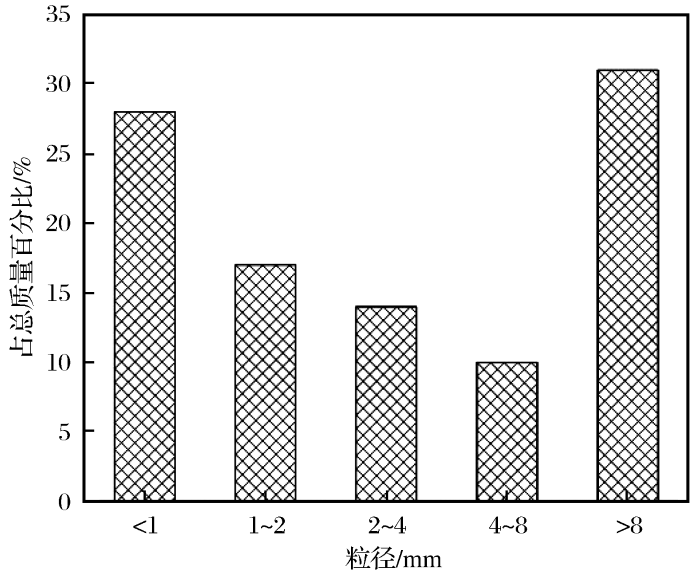
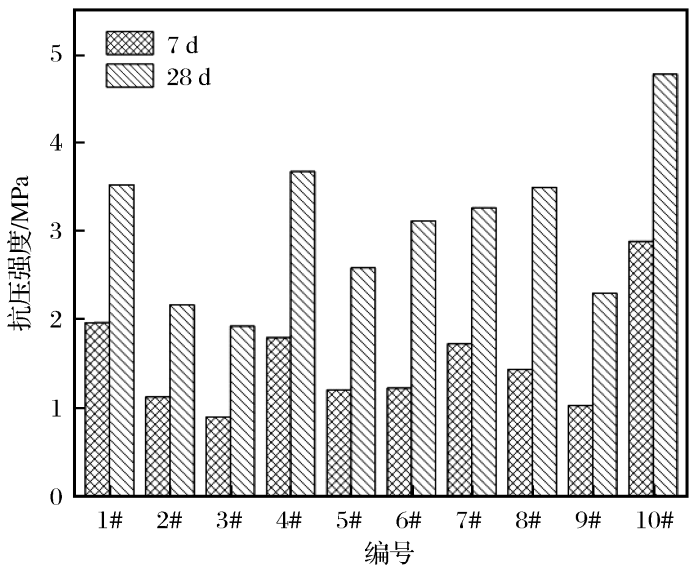

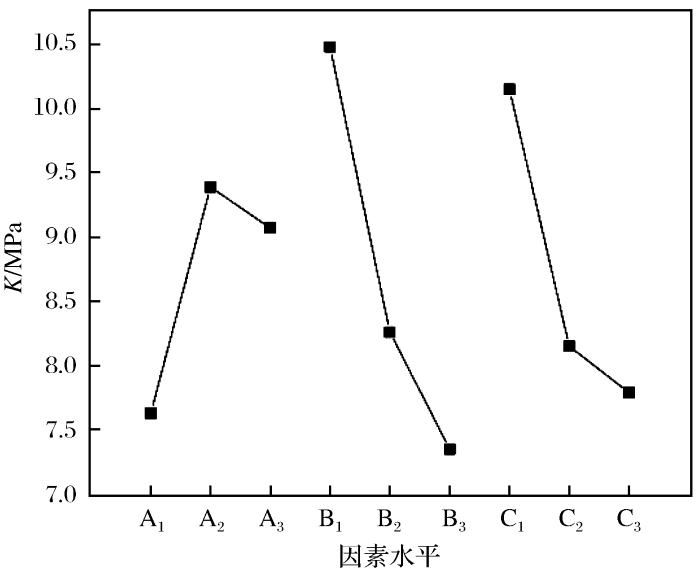

 甘公网安备 62010202000672号
甘公网安备 62010202000672号